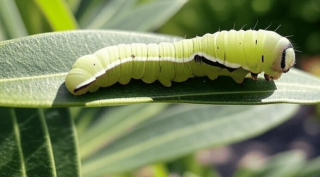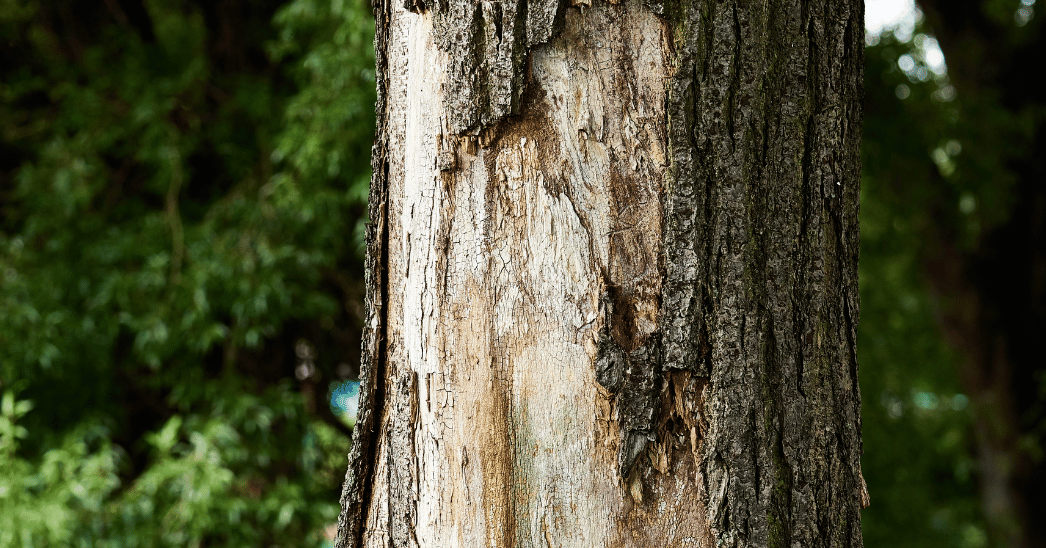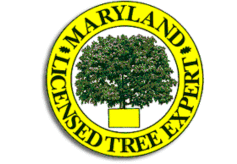Oleander caterpillars are easy to spot if you know what to look for. These pests are bright orange with black tufts of hair running down their bodies. They’re often mistaken for tussock moth caterpillars, but the key difference is their smooth orange coloring and black-spotted look.
If you see a black-spotted pest on your oleander plant, especially one with bright colors and fuzzy black hairs, it’s likely an oleander caterpillar. They feed in groups and move fast, leaving behind chewed-up foliage.
In fact, they skeletonize the leaves, stripping away green tissue and leaving only the veins. These caterpillars eventually become dark moths, but the real damage happens during their larval stage. Keep a close eye on your oleander plants, especially during warm months, to catch these destructive pests early.
Biology and Life Cycle
Oleander caterpillars go through four life stages: egg, larva, pupa, and adult. The moth lays clusters of tiny white or yellow eggs on the underside of leaves. Within days, the eggs hatch.
The caterpillars feed in groups. They grow quickly and shed their skin several times. After about two weeks of eating, they form cocoons and pupate.
Within a week or so, the adult moths emerge. These moths are black with white spots and have metallic blue wings. They do not feed on plants. But they quickly lay eggs, starting the cycle again.
In warm climates, multiple generations can occur each year. Infestations can build up fast if not managed.
Damage and Symptoms
Oleander caterpillars are leaf-chewers. Their feeding leaves holes, ragged edges, and even skeletonized leaves. Severe infestations can strip plants down to bare stems.
Early signs of damage include:
- Chewed leaves
- Brown or skeletonized foliage
- Black droppings (frass) on and under the plant
- Clusters of orange caterpillars on leaves and stems
Although oleander plants are tough, repeated defoliation stresses the shrub. It weakens plant health, reduces flowering, and makes the plant more prone to disease.
Host Plants and Habitat
As the name suggests, the oleander caterpillar feeds mostly on oleander (Nerium oleander). This is a popular ornamental shrub in warmer states like Florida, Texas, and parts of the Mid-Atlantic.
The caterpillar prefers warm, humid conditions. You’ll find them on outdoor oleander bushes, especially in sunny spots.
They may also occasionally feed on related plants in the dogbane family. However, oleander is by far their main target.
Management and Control Methods
You can control oleander caterpillars with a few easy steps. The earlier you act, the better. Here’s what we recommend:
- Handpicking
If you see just a few caterpillars, remove them by hand. Use gloves. Drop them into a container of soapy water to kill them. This works well for light infestations.
2. Pruning
Cut off heavily infested branches. Bag and dispose of them. Pruning not only removes caterpillars—it also encourages healthy regrowth.
At Strobert Tree Services, we offer careful, clean pruning by certified arborists. We remove only what’s needed to help your plant recover.
3. Insecticidal Soap and Oils
Spray insecticidal soap or neem oil on leaves. These products are safer for people, pets, and pollinators. Make sure to cover the undersides of leaves where eggs and larvae often hide.
Repeat treatments may be needed every 7–10 days until the infestation stops.
4. Bacillus thuringiensis (Bt)
Bt is a natural bacteria that kills caterpillars. It works best on young larvae. Spray it in the evening when caterpillars are feeding.
It won’t harm birds, bees, or other beneficial insects.
5. Chemical Insecticides
For large or repeated infestations, you may need stronger solutions. Use with caution. Always follow label directions.
Our licensed tree care experts at Strobert Tree Services can apply professional-grade treatments that are effective and safe.
Resources and Assistance
Dealing with an oleander caterpillar infestation can feel overwhelming, but you don’t have to handle it alone. Strobert Tree Services provides expert tree and shrub care for homeowners, property managers, and HOAs across Delaware, Pennsylvania, and New Jersey. Whether your plants need pruning, pest control, or a full health checkup, our certified arborists are here to help. We offer everything from free plant health assessments to long-term tree and shrub healthcare programs.
Contact Strobert Tree Services
If you notice chewed leaves or clusters of orange caterpillars, don’t wait—these pests can defoliate your oleander quickly. Contact Strobert Tree Services at 1-800-TREE-SERVICE to schedule a consultation. We specialize in fast, effective treatment for oleander caterpillars and provide the support you need to keep your landscape healthy year-round.











